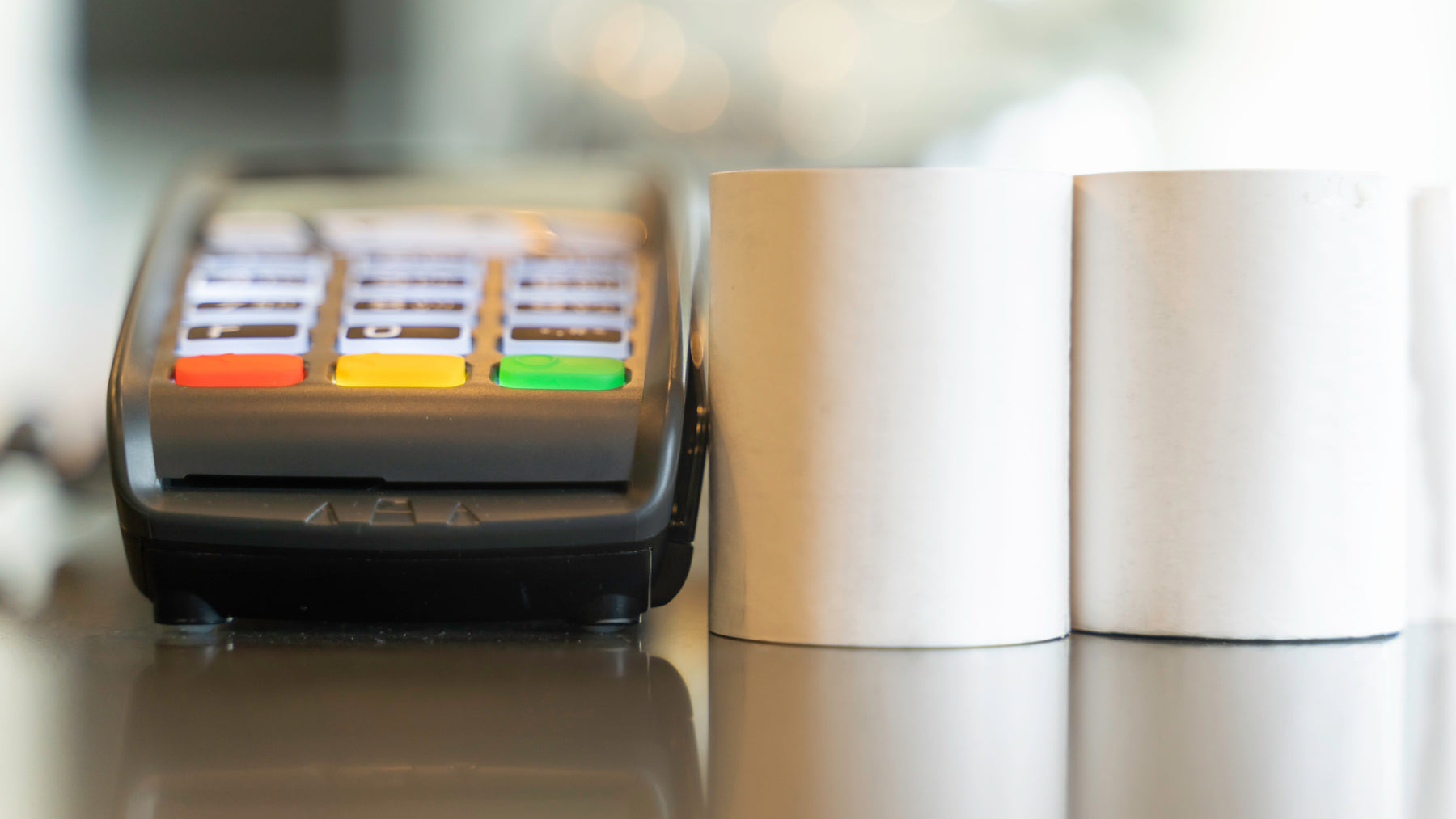
What Is Thermal Receipt Paper?
What is thermal receipt paper? It’s a special kind of paper that changes its color when in contact with heat without using traditional ink. It is normally used in thermal printers for devices like credit card terminals, adding machines, and cash registers. Thermal paper is made by applying special chemical materials sensitive to heat to a paper base. These chemicals have a variation based on the manufacturer.
How to choose the right thermal receipt paper
After answering the question of what is thermal receipt paper, it is vital that you know how to choose a thermal paper that best suits your printing applications. The direct thermal material differs from the standard paper as far as their engineering is concerned. There are many options in terms of paper and synthetic formulations, and the chemicals involved enable the paper to produce an image when in contact with heat. Even though the materials may look similar, their chemical compositions affect their resistance to heat, moisture, and other external factors. The lifespan of the printed images and the thickness of the paper also vary.
Even if most documents appear to be fine the moment they come out of the printer, the real test is how they hold up throughout their lifespan. When printed data becomes unreadable, problems may arise with service, returns, compliance, and warranties. It’s necessary to consider all these factors to ensure the documents remain readable and intact when still in use. Below are six important factors you should put into consideration when trying to understand what is thermal receipt paper and also choosing the right one:
-
Heat
Consider a material that is heat resistant in the case where exposure to extreme heat becomes a concern. A good example is documents left in vehicles, where temperatures can go up to more than 150 degrees during summer, turning black and unreadable due to the chemical reaction involved. Some thermal materials are specially built to survive higher temperatures to avoid this problem.
-
Thickness
Thicker materials have proved to be more durable and are considered to be of higher quality by customers. However, it’s important to note that the thicker the material, the fewer the documents that can be printed before replacing the roll. For example, for 57mm x 40mm thermal paper size, the length will vary from 10 meters to 18 meters depending on the thickness.
-
Coating
Every thermal paper has both base and thermal coats, but not all of them have a topcoat. Topcoats provide extra layers of protection against certain environmental exposure. Materials without topcoats are applicable in cases where limited resistance is required.
-
Smooth
A thermal roll paper should be smooth on every side for it to be considered as good. A paper that is not smooth both front and back will attract dust when used for printing purposes and hurt the printer header at the end of the day.
-
Durability
In a number of cases, documents are required to be durable enough to withstand reference and storage. The longer they need to be stored and referenced, the more protection they need from moisture, heat, and other factors. Storage is a vital factor in a document’s lifespan but is often overlooked. Therefore, it is paramount to ensure that the materials involved meet your archiving requirements.
-
Moisture
There are situations whereby documents get damaged when exposed to moisture or stored in a wet or humid environment. This is when a thermal paper with extra moisture resistance comes in handy. It will prevent the document from becoming degradable and unreadable in the long run.
The Difference Between Regular Paper and Thermal Paper
The difference between regular and thermal paper will help you understand what is thermal receipt paper. The difference is mainly the coating that involves a mixture of chemicals and dye when producing thermal paper. There is a reaction between the dye and chemicals when heat levels go past the melting point, causing a shift in color (normally black but sometimes red and blue). As a result, the paper becomes legible as the machine heats the right areas.
There are three unnoticeable layers in a thermal paper, namely:
- The paper is basically the substrate layer.
- The base layer is the binding element made from gelatin, alkali, and starches salts. It enables heat to move through the paper.
- The active layer includes chemicals that enable the paper to react to heat.
- An extra protective layer that prevents the paper from fading is present in some of the thermal papers.
You can identify the direct thermal receipt paper from the regular paper by feeling it in your touch. The surface of the thermal paper is somehow slick, while the normal one feels just like a regular copier paper.
